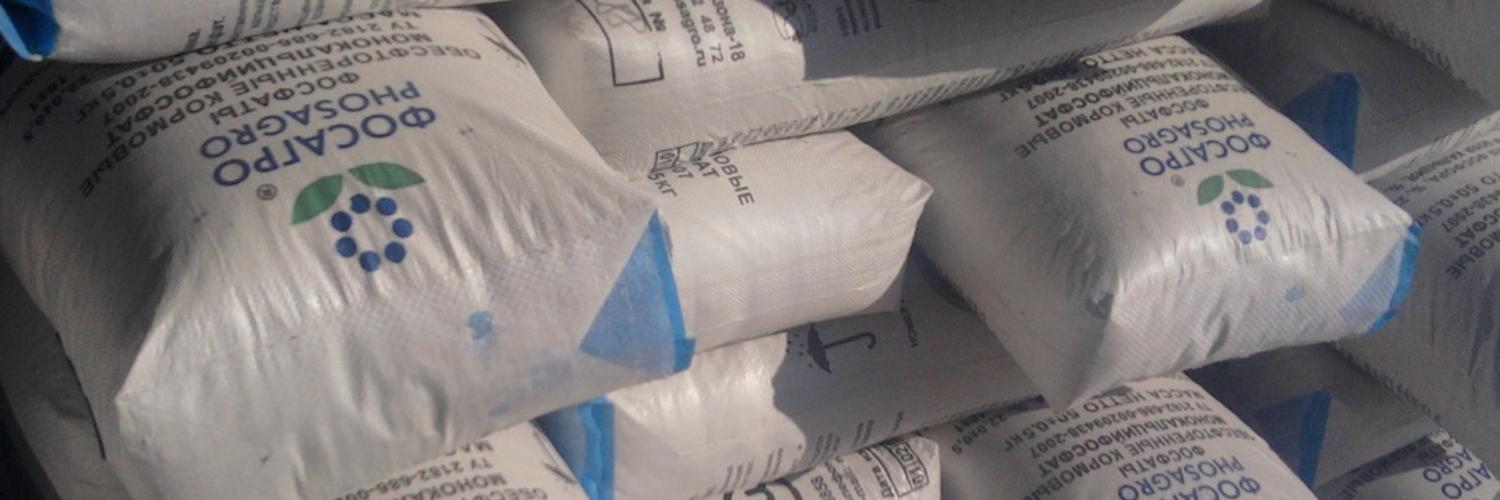Phosphorus is an important element of nutrition of animals
In the full nutrition of animals, an important role is performed by phosphorus. It is one of the basic structural components of the body, it takes an active part in the metabolism of proteins, fats, carbohydrates, energy, minerals, vitamins, is a part of the most important metabolites. All the synthetic processes associated with the growth and production of products, pass with its compounds.
It is difficult to name the physiological function of the organism, in which the phosphoric acid derivatives do not take direct or indirect participation. Phosphorus is the only mineral element that affects the quality of meat.
The lack of phosphorus in diets is found everywhere, causing a deterioration in the general condition, a decrease in appetite, growth, and resistance to diseases, bone disease. The phosphorus deficiency is from 20 to 50%. The main sources of the element are fodder and mineral supplements.
Up to 85% phosphorus from plants - phytate
In plants, phosphorus is in the form of organic and mineral compounds. In vegetative parts, a large proportion of it is soluble and is accessible to animals. In seeds, 30 to 85% of phosphorus is present in the form of phytate. The structure and stability of it in different seeds are not the same.
Phosphate phosphorus can be assimilated only after dissolution and hydrolysis with its phytase to inorganic. In ruminants, the absorption of phytate phosphate occurs in essentially the same way as inorganic (due to phytase microflora of the rumen). In pigs and poultry it is limited and depends on many factors: the activity of phytase feed, the pH of chyme, the level of Ca and vitamin D in the diet, the age of the animals, and therefore ranges from 10 to 40%. To increase the digestibility of phytate phosphorus in diets of monogastric animals, enzyme preparations with phytase activity are successfully used.
Due to the low phosphorus content in the main feed and its low bioavailability (DB), rations are enriched with inorganic sources of this element. Since the cost of phosphates is high, great importance is attached to the study of their databases. It has been established that the availability of phosphorus depends on the quality of raw materials and the technology of its processing, the structure and physical and chemical properties of phosphates, the type, and age of animals, the composition of rations and other factors.
Types of phosphorus additives for feeding farm animals
As phosphoric fertilizing it is advisable to use phosphates with digestibility above 40%. The organism uses one-, two- and three-substituted phosphates in order to decrease effectiveness. The difference in DB of phosphorus from various calcium o-phosphates is explained by the influence of high temperature during the drying process of the product, which increases the content of pyro- and metaphosphates, which reduce the digestibility of the element.
Temperatures above 400 ° C in the production of mono- and dicalcium phosphate lead to the formation of beta-metaphosphates and beta-pyrophosphates, which the animals do not digest.
The most convenient physical form of phosphates is granules, but the industry produces them usually in the form of powders. The particle size also affects the phosphorus DB: a strong grinding reduces availability.
Factors of phosphorus availability
The solubility of phosphates is also an important factor of availability. To determine the phosphorus DB for pigs and poultry, the most suitable test is the solubility in 0.4% (0.1 M) HCl (the concentration of hydrochloric acid in the stomach). A significant correlation was found between the solubility of inorganic phosphates in 0.1 M HCl and phosphorus dibs for young animals.
Pollution of natural phosphates with aluminum and other metals reduces the absorption of phosphorus since hardly soluble complexes are formed. Phosphates may contain excess fluorine, cadmium, mercury, lead, arsenic, vanadium, which is very toxic.
Today, in many countries, rations for pigs and poultry are balanced against the available phosphorus. This allows one to more economical use of expensive element supplements and avoids overdose. Excessive phosphorus content increases feed consumption, reduces reproductive function and makes manure and slurry environmentally hazardous.
The chemical composition and properties of the monocalcium phosphate of fodder, dicalcium phosphate from extraction phosphoric acid, and also for comparison of calcium phosphate of fodder (tricalcium phosphate) and limestone flour are presented in Table. 1.
Table 1. Chemical composition and properties of some calcium phosphates

The results of the experiments confirmed the data on the dependence of the chemical and biological properties of phosphates on the technology of their production. According to digestibility and bioavailability, monophosphates are superior to di- and tricalcium phosphates. All of them did not exceed the maximum permissible levels of toxic and harmful impurities.
It is known that chalk, limestone and tricalcium phosphate have a high buffer capacity, can bind a significant amount of hydrochloric acid in the stomach, which leads to digestive disorders. In this regard, rations of young animals and birds should include mono- and dicalcium phosphate with a small buffer capacity.
Experienced studies of bioavailability of phosphorus
The results of the experiment on the effect of calcium phosphates on the productivity of piglets are given in Table. 2. Animals at the age of 98 days were divided into 4 groups of 7 animals each, cultivated on a corn-barley-soy diet. One group did not receive phosphorus additives (it contained 0.33%, of which about half in the form of phytate).
Table 2. The growth rate of piglets and the efficiency of feed use for a different source of phosphorus in the diet

Phosphates were included in the main diet at the rate of 0.2% phosphorus. All animals were given the same amount of feed (2 kg/day) and calcium. The experiment lasted for 32 days. On a diet without phosphorus, the gain decreased by 30% compared with those receiving tricalcium phosphate.
A direct correlation dependence was found between the bioavailability of phosphorus and the intensity of growth. Consequently, the quality of fodder phosphates directly affects the profitability of livestock. Their price in the first place should depend on the content of available phosphorus.
Sergey KUZNETSOV,
Doctor of Biological Sciences, General Director of CJSC "Vitasol"
Alexei KUZNETSOV,
Biotechnologist, post-graduate student of MSUPP
Source: Journal of Livestock of Russia




